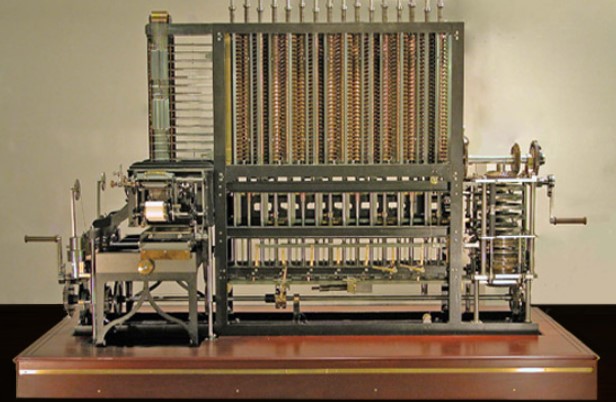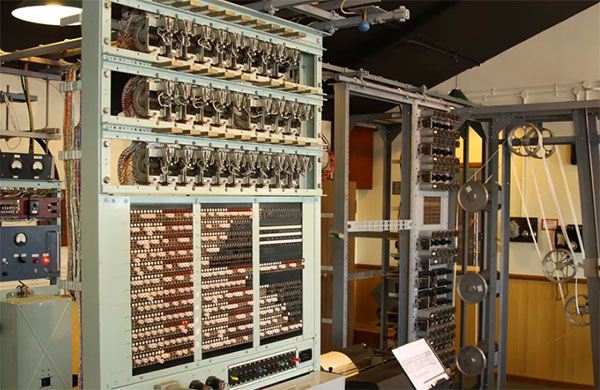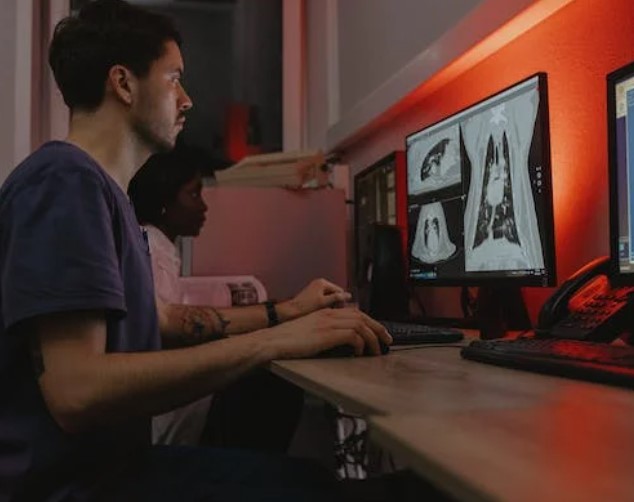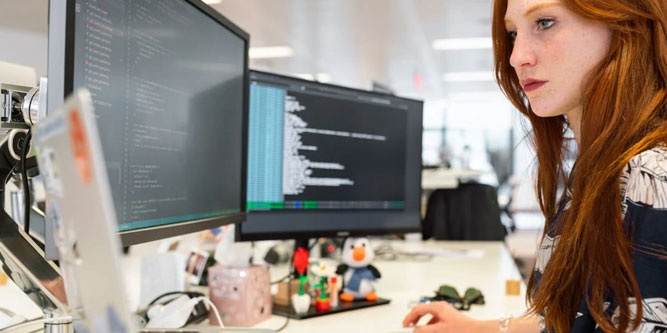Computers have made all aspects of our lives easier, from communications to entertainment. But perhaps nowhere have they been more impactful than in the realm of science. So, how are computers used for science, and how has this made life easier for scientists?
Computers are used for science in several ways. They’re used to process large quantities of data that would take too long for humans to process. They can perform complex mathematical operations quickly and with precision. Computers can also be used for collaboration, much like they are in the business world.
A Short History of Computers
Before we talk about what computers are doing today, it’s worth talking about where they came from. How did we get to today’s world of advanced AI and big data? You can trace the origin of mechanical counting machines all the way back to the abacus. But the story of modern computers begins in 1801. That year, a French weaver named Joseph Marie Jacquard invented a loom that worked based on a punch card. Patterns were stored on a paper card, which workers could feed into the loom. This reduced the potential for error and made the weaving process far more efficient.

In 1822, English inventor Charles Babbage would invent a steam-powered calculating machine. This machine was analogous to a basic calculator, except for being mechanical. In 1890, American inventor Herman Hollerith would invent a punch card system specifically for the census. By tabulating results by machine instead of by hand, the government would save $5 million. That’s more than $163 million in 2023 dollars. Later in life, Hollerith would found the Computing-Tabulating-Recording Company, which went on to become IBM.
Computer technology took huge leaps forward in the 1930s and 1940s. Alan Turing would invent his famous Turing machine in 1936, which could calculate any possible computation. In many ways, all modern computers are based on Turing’s design. A few years later, in 1939, Bell Telephone Laboratories would patent their own computer, the Complex Number Calculator.
That same year, computers would see their first use in the entertainment industry. California-based engineers Bill Hewlett and David Packard founded Hewlett-Packard and developed an audio oscillator. This advanced piece of testing equipment proved wildly successful. When Disney released Fantasia in 1940, they would use Hewlett-Packard’s oscillator to test theater speaker systems.
1941 saw the advent of computer memory. A professor at Iowa State University named J.V. Atanasoff would develop a computer that solved multiple equations. It could hold 29 equations in memory and solve all of them simultaneously. Amazingly, the same thing happened in Germany at almost the same time. An engineer named Konrad Zuse would create a 22-bit computer that performed floating-point calculations. Unfortunately, Zuse’s Z3 computer would be destroyed by an allied air raid in 1943.

World War II also brought us the first modern computer: the Colossus. The Colossus used vacuum tubes rather than modern transistors, and it was truly enormous. But it was programmable, digital, and 100% electrical. Colossus did what no other computers of the time were capable of. It helped British spies break the Lorenz cipher, a crucial part of the German wartime codes.
Since World War II, computers have continued to evolve. Without computers, NASA would never have been able to land an astronaut on the moon. The computers on the lunar module were among the smallest and lightest ever mad up to that point. And by the 1980s, the PC revolution brought computers into our homes and offices. From 1990 to 2003, some of the world’s most powerful computers completed the Human Genome Project.
Today’s computers are even more powerful. Text programs like ChatGPT are all but indistinguishable from real human conversation. And big data and artificial intelligence are having huge impacts on science and medicine.

Uses of Computers in Science
Now that we know a bit about where computers have come from, let’s talk about their scientific applications. These fall into several different areas.
1. Performing Mathematical Operations
The first and most obvious of uses for computers is doing math. That’s why we call them “compute” -ers, and it’s what the Colossus was used for. But today’s computers are far more advanced. They perform truly staggering calculations, like calculating Pi to the trillions of digits. That’s something no human being would be capable of doing, no matter how much time they had.
This has huge implications for science. Remember the human genome project? Mapping out billions of pieces of DNA is another thing no human being could do.
This isn’t just a matter of how complex the equations are. Computers can solve even simple equations much faster than a human. They also remove the potential for error. Imagine spending a decade on a research project, only to discover that you made a basic math error on day one. Thanks to computers, that’s no longer a concern.
Along the same lines, computers can be used to take measurements at astounding rates. Take a high-speed camera, for example. If you want to film millions of frames per second, you can’t do it with a mechanical system. Only a digital, computer-controlled system is capable of working at such absurdly fast speeds. The same goes for controlling ultra-sensitive devices that are used for researching subatomic particles. In other words, the most advanced, cutting-edge scientific research is only possible thanks to computers.
2. Automation
When you think of automation, you probably think about industry. Plenty of ink has been spilled about factory jobs being lost to robotics. But automation has also been an incredible boon for science.
For one thing, robots can perform repetitive tasks. If you want to stir a bunch of beakers three times an hour, it’s nice to have a robot to do it for you. Robots can also be powerful safety tools. For example, scientists use robotic arms to handle radioactive samples that are too dangerous to touch.
3. Creating and Sharing New Data
The same tools that help office workers to be more productive also help scientists. If you’re writing a grant proposal, you wouldn’t do it on a typewriter or scribble it out by hand. You’d do it on a computer. If you’re tabulating data, you do it in a spreadsheet. These things used to be more complicated when you had to do everything by hand.
Computers are also powerful tools for sharing and disseminating data. In fact, the internet has its origins in part in a network of universities that wired their computers together. Today, teams from across the globe can collaborate on the same research and share their data in real time. Cloud storage has played a key role in this development, since teams are able to share online folders. Other collaboration tools like Slack have played a similar role.
4. Analyzing Complex Data
Sometimes, AI can identify patterns where a human being wouldn’t. For example, think of healthcare, which is an incredibly complex field. A computer might be able to recognize that a certain medication works best when combined with another, seemingly-unrelated medication. Similar analysis has been used to identify possible side effects to drugs – sometimes years after they were released.
Climate science is another good example. A thorough survey of the climate and atmospheric CO2 could require mind-boggling numbers of data points. If you want to manage that much data, you’re going to need to use a computer.
5. Making Predictions
Thanks to computers, scientists are able to model what might happen in the future. This is usually done in the realm of applied science. Turn on the TV and watch the Weather Channel, and you’ll see computer modeling at work. But modeling comes up in all kinds of areas. Engineers can model various designs and building materials to see how they’ll stand up over time. They can even model erosion to help with designing coastal buildings.

Uses of Computers in Medicine
Besides general scientific applications, computers also have many uses in medicine. Here are some of the ways computers are being used to improve healthcare outcomes:
- Pharmaceutical testing – Computers help to test new chemical compounds for possible medical applications.
- Creating simulations – Doctors can use predictive analysis to determine the best course of action for a patient. A computer can run thousands or tens of thousands of simulations, and suggest the best path forward.
- Analyzing blood samples – Computers and mass spectrographs can quickly search for pretty much any compound. They can help ensure that patients maintain the right levels of blood sugar, amino acids, and other compounds.
- Aggregating research data – Medical research can involve thousands of patient records with many data points each. Computers can make this data easy to understand and searchable.
- Ensuring proper patient care – Computers can be used to keep track of a patient’s regime and make sure it’s being followed.
Computers have many applications in science and medicine. From their ability to manage huge amounts of data to their vast processing power, they can do a lot of work. Who knows what they’ll be doing in 10 or 20 years?
Meet Ry, “TechGuru,” a 36-year-old technology enthusiast with a deep passion for tech innovations. With extensive experience, he specializes in gaming hardware and software, and has expertise in gadgets, custom PCs, and audio.
Besides writing about tech and reviewing new products, he enjoys traveling, hiking, and photography. Committed to keeping up with the latest industry trends, he aims to guide readers in making informed tech decisions.

